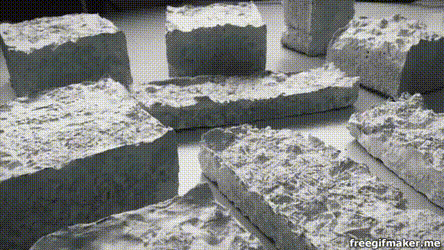The mushroom that works like a green 3D printer

The Mycelium, Design and Architecture team members. © Alain Herzog/EPFL
Summer series. Students' project (1/9) – A team of environmental engineering and architecture students at EPFL has discovered a way to grow a biodegradable material from mycelium and sawdust. Their new material – made using their own special recipe – has promising properties and could serve as a replacement for plastic.
It’s not just mycologists who are interested in the physical properties of mushrooms. Today a growing community of environmentally conscious consumers is looking more closely at mycelium, or the part of mushrooms that grows underground. This thread-like substance can bind together various substrates, such as woodchips, and the resulting mixture can be molded into things like bricks, panels, packing chips, furniture and a host of other objects. Eight students at ENAC are studying how mycelium – which individuals can grow themselves – could potentially be used to replace plastic.
 “This idea came up when we met with architecture students at our school to develop an original, innovative alternative to existing building materials, which generate a lot of pollution,” says Gaël Packer, an environmental engineering student at ENAC. Inspired by a TED talk, he and his classmates decided to lend their support to this groundbreaking community concerned about the future of the earth. As future architects and construction engineers, they realize that, as a result of resource depletion, some of today’s building materials won’t be around forever, and that existing materials generate a lot of emissions throughout their life cycle, from production to disposal.
“This idea came up when we met with architecture students at our school to develop an original, innovative alternative to existing building materials, which generate a lot of pollution,” says Gaël Packer, an environmental engineering student at ENAC. Inspired by a TED talk, he and his classmates decided to lend their support to this groundbreaking community concerned about the future of the earth. As future architects and construction engineers, they realize that, as a result of resource depletion, some of today’s building materials won’t be around forever, and that existing materials generate a lot of emissions throughout their life cycle, from production to disposal.
Promising results
Mycelium-based materials offer a promising alternative because not only are they light, cheap and easy to make, but they also provide a way to recycle waste products and can be biodegraded in just three months. Today a number of grow-it-yourself kits are available online; all you need is mycelium, a substrate and a bit of patience (not included in the kit). The first step is to grow the “mushroom roots” in a sterile or pasteurized environment together with the substrate and some flour and water. The resulting mixture is then poured into a mold. Once it has set – which takes about a week – it needs to be baked at a low temperature to stop any further growth and consolidate the object’s shape. The result is a light, low-density, solid, and resistant object – much as if it had been produced using 3D printing.
Rather than use a grow-it-yourself kit, the students made their own version of the mixture using mycelium from local oyster mushrooms and fibers from hemp grown in the Jura region. Then, armed with a healthy dose of scientific skepticism veiled in optimism, the students tested out their mushroom-derived material. “We worked with several EPFL labs to test the material’s key properties: thermal insulation, acoustic absorption, compressive strength, and water- and fire-resistance,” says Packer. They found that its thermal insulation capacity was on par with other insulating materials, that it could easily withstand the weight of a human body, that it floats and is watertight, and that it is fairly fire-resistant. Acoustic absorption tests are still under way.
“Although further testing is needed, the results so far are highly promising and show that the material’s properties are similar to those of expanded polystyrene. We can certainly improve those properties further by adjusting the composition of our mixture, whether in terms of the substrate or the mushroom feed,” says Packer.
The success of this project owes in part to ENAC’s Student Kreativity and Innovation Laboratory (SKIL), an open-space workshop where students can work on class projects and receive technical and practical support as well as assistance from teachers.
The Mycelium, Design and Architecture (MD&A) team members are: Kimberley Berney, Adrien Berteaux, Aurélien Brun, Mathias Helfenstein, Thomas Läng, Enrico Margaroli, Leily Moser and Gaël Packer.
Contact: [email protected]



